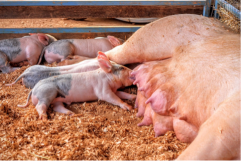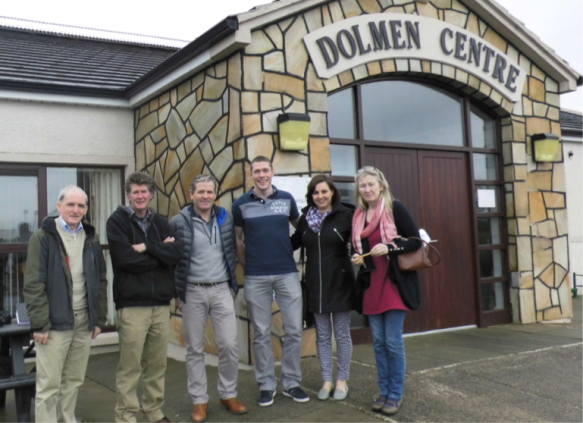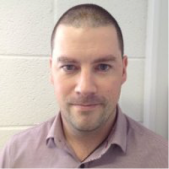‘Whittled Away’ is the title of a recently published book by Pádraic Fogarty. In the book, he describes the decline in Irish wildlife and suggests what can be done to ensure that many more species are not brought to the brink of extinction. Another initiative is ‘National Biodiversity Week’ – it’s all about inspiring people to protect nature and it takes place from Friday, 19 – Sunday, 28 May.
‘WHITTLED AWAY’
‘Ireland’s natural heritage is being steadily whittled away by human exploitation, pollution and other aspects of modern development. This could represent a serious loss to the nation.’
Irish Government Report, 1969.

Pádraic Fogarty opens his book by quoting the urgent call for intervention to prevent the loss of our natural heritage which was in a government report published in June 1969 – almost 50 years ago. He tells us that since that report was written, nature in Ireland has continued to disappear at an alarming rate. Overfishing, industrial-scale farming and pollution have decimated wildlife habitats and populations. In a single lifetime, vast shoals of herring, rivers bursting with salmon, and the sound of birds such as the corncrake and the resident curlew have all become folk memories.
‘Whittled Away’ charts the decline and the failure to manage our natural heritage. On a positive note Pádraic Fogarty says that all is not lost: he reveals the possibilities for the future, describing how we can fill our seas with fish, farm in tune with nature, and create forests that benefit both people and wildlife. He calls for the return of long-lost species like wild boar, cranes and wolves, showing how nature and wildlife can recover hand in hand.
Pádraic Fogarty is a professional ecologist who has served as chairman of the Irish Wildlife Trust (IWT), and now works as its campaigns officer and editor of the magazine Irish Wildlife. In recent weeks he has been critical of the lack of action to prevent the spate of gorse fires countrywide. The fires have destroyed a lot of wildlife including the nests of already endangered birds such as the Hen Harrier.
‘Whittled Away’ is available in hardback or as an eBook from the usual sources as well from the publishers Collins Press at http://www.collinpress.ie or from IWT http://www.iwt.ie.
BIODIVERSITY WEEK (19th – 28th May)
Biodiversity Week takes place next week. It’s about connecting people with nature and communicating the importance of biodiversity and motivating people to play their part in protecting it. It’s also about entertaining people; showing the fun and wonder that can be found in nature; and inspiring people to learn more, see more, do more. There are over 50 events taking place around the country. While none are listed for Co Monaghan there are events in Co Cavan (a bat walk in Virginia) and in Co Meath (a bird/butterfly event in Girley Bog, Kells).
Are you an amateur photographer? Would you like to be in with a chance to win up to €500 in cash prizes? Then why not enter one of the Biodiversity Photographer of the Year competitions! There are two photography competitions underway. ‘Biodiversity Photographer of the Year’ competition is open to the general public and ‘Young Biodiversity Photographer of the Year’ competition is open to secondary school students. See details of events and competitions at http://www.biodiversityweek.ie.
BECOME A CITIZEN SCIENTIST
For those who would like hands-on experience in recording and monitoring Ireland’s flora and fauna, there are a number of citizen science projects that you can get involved with. Citizen scientists are volunteers who play an active role in gathering data for scientists. According to a recent study, citizen science has the potential to contribute hugely to regional and global assessments of biodiversity. Citizen science can engage thousands of people in conducting simple experiments, providing important data that would be too time-consuming to generate through other means.
Five suggested citizen science projects relating to biodiversity are listed on the website http://www.greennews.ie. These are Bat Monitoring, Bird / Butterfly Monitoring, Ladybird Monitoring, Count Flowers for Bees and From Soil to Sky (Soil Monitoring). For more information see http://www.greennews.ie.
BIOLOGICAL DIVERSITY DAY 2017
The theme for International Day for Biological Diversity 2017 on Monday 22 May is Biodiversity and Sustainable Tourism. Biodiversity, at the level of species and ecosystems, provides an important foundation for many aspects of tourism. Recognition of the great importance to tourism economies of attractive landscapes and a rich biodiversity underpins the political and economic case for biodiversity conservation. Many issues addressed under the ‘Convention on Biological Diversity’ directly affect the tourism sector. A well-managed tourist sector can contribute significantly to reducing threats to, and maintain or increase, key wildlife populations and biodiversity values through tourism revenue. This is the challenge for tourism in Ireland and globally.

 being fattened for slaughter in Ireland. That number includes the pink porkers in the farm up the road. I try not to stand down wind on warm summer days. Was there something special about the Danish rashers? Not particularly. Just the fact that they were organic, more expensive and had a higher percentage of pork than the Irish rashers.
being fattened for slaughter in Ireland. That number includes the pink porkers in the farm up the road. I try not to stand down wind on warm summer days. Was there something special about the Danish rashers? Not particularly. Just the fact that they were organic, more expensive and had a higher percentage of pork than the Irish rashers. Pictured at the Sustainability Energy Communities border networking event at the Dolmen Centre, Portnoo, Co Donegal were Liam Murtagh, Castleblayney Sustainable Energy Group, Mel Gavin, IT Sligo, Seamus Dunbar, Manorhamilton, Leo Murray, IT Sligo, Kenneth Doherty, Dolmen Centre, Gillian Gannon, SEAI and Eithne Ní Lochlainn, Gortahork.
Pictured at the Sustainability Energy Communities border networking event at the Dolmen Centre, Portnoo, Co Donegal were Liam Murtagh, Castleblayney Sustainable Energy Group, Mel Gavin, IT Sligo, Seamus Dunbar, Manorhamilton, Leo Murray, IT Sligo, Kenneth Doherty, Dolmen Centre, Gillian Gannon, SEAI and Eithne Ní Lochlainn, Gortahork. 